Tom Grove's Blog, page 3
June 5, 2017
Amazon Sales Analysis
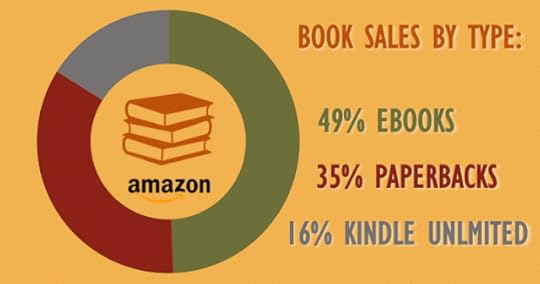
I took a look at the sales of The Pink Herring through Amazon today. Nearly half the sales are in the eBook format and I expect that percentage to rise as time goes on.
The price differential between the eBook and the paperback is £8 although there is little difference in royalty due to the print costs. 16% of the sales have been through the KindleUnlimited platform and it's surprising that's it's so low.
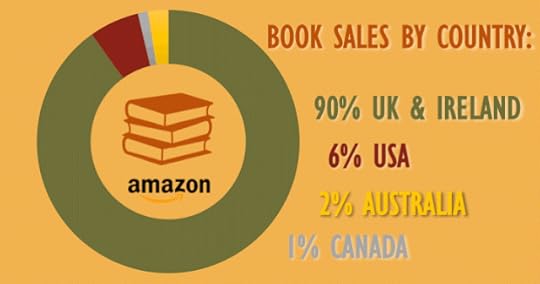
However, the second set of slides show the split between countries and no surprises that the vast majority of sales come from the UK and Ireland (90%) with only 6% from the USA. KU membership is much more common in the states and may account for why the sales through KU are low.
I have found it very difficult to break into the US market since I only have 2 reviews there as opposed to the 13 reviews I have in the UK. I may indulge in some mainstream marketing once the The Nor'easter is released since the series will hopefully be established by then...
Please feel free to share this - go on, hit the button of your choice...
Published on June 05, 2017 08:45
May 31, 2017
Marketing Is A Creative Drain
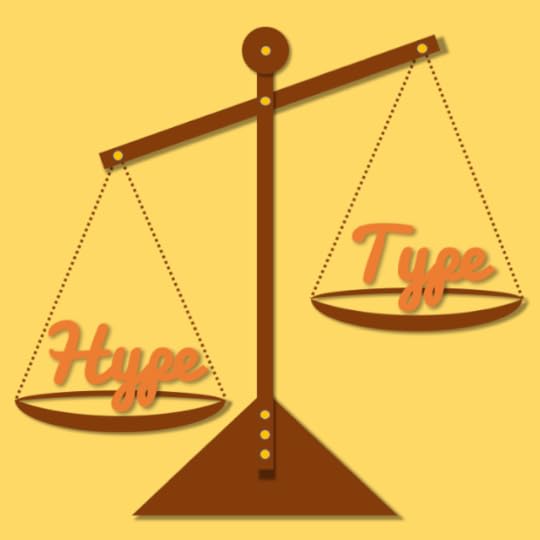 ... and I'm falling helplessly down it. So, I published The Pink Herring at the end of March intending to spend a small proportion of my time on marketing activity - the majority devoted to working on the next book. Two months on and guess what? I have managed the exact opposite of that proportion...
... and I'm falling helplessly down it. So, I published The Pink Herring at the end of March intending to spend a small proportion of my time on marketing activity - the majority devoted to working on the next book. Two months on and guess what? I have managed the exact opposite of that proportion...This is not some form of naivety, I knew that as an indie author the marketing would be time consuming, but it's something I can't leave alone. Instead of writing about Shaun Young's latest dilemma, I find myself twiddling with Google Adwords or updating my Facebook author page or Twitter or blogging (and here I am!). What I can't work out is whether I am still on the learning curve of optimising social media marketing or whether it is a convenient excuse to avoid sorting out the latest plot twist. Whichever it is, I am certain of one thing: the constant nagging from the marketing side of my brain is seriously interfering with what I know to be my creative process.
In the days before I had to worry about marketing, my daily writing routine allowed me to be subsumed within the writing process. Within a few minutes I would living the story, happily countering out 3,000 to 4,000 words a day, the hours flying by. I am finding it almost impossible to regain the immersion that I had before because of that irritating little sales finger poking the side of head.
So, what am I going to do about it? Well, I can't stop the marketing but I need to get the time I spend on it under control. I remember Stephen King saying that he devotes his mornings to writing and the rest to 'other stuff' (I suspect he doesn't have to worry about the marketing quite as much as I do). Perhaps this is an approach I need to take? Put aside a few hours a day or a specific marketing day so that I can compartmentalise the 'other stuff' to leave the lion's share, or a known dedicated time, where I can try to regain the immersion I need?
I am going to start this new approach and I'll let you know how I get on. Perhaps, if you can spare the time, you'd leave a few comments below to let me know how you deal with this dilemma or have some advice that I could use - it would be greatly appreciated...
Please feel free to share this - go on, hit the button of your choice...
Published on May 31, 2017 05:41
May 24, 2017
Spelling Bee

This evening I had the immense pleasure to watch my daughter perform in the excellent Spelling Bee held at the Swindon Arts Centre . This was her final year project and it was as entertaining as it was professionally produced.
Myself, Babs and Rachel travelled down for the 7:30 pm performance, stopping briefly at McDonalds for some cheeky fast food. We sat outside in the evening sun and was joined by a member of staff on their break - he bore an uncanny likeness to Tom Hanks.
It was wonderful to watch the creativity and pure joy that Charlotte puts in and takes away from the performing arts - it reminds why I am now investing in my creative side. I will push on with writing The Nor'easter will renewed vigour tomorrow...
Published on May 24, 2017 08:53
May 23, 2017
The Blackrock Bookies
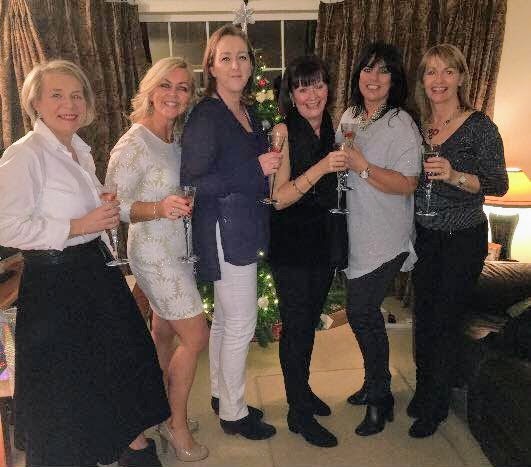 Well, this was a first for me. Tonight, I was invited to be the star attraction at The Blackrock Bookies, an Irish book club hailing from just outside Dundalk, County Louth in the Republic of Ireland. The members include, From left to right: Anna Capplis, Grainne Hoey, Ruth Sands, Margaret Moynihan, Patricia Keenan, Michelle Reidy. Missing from the picture are Anne Donaghy and Brigitte Nelson.
Well, this was a first for me. Tonight, I was invited to be the star attraction at The Blackrock Bookies, an Irish book club hailing from just outside Dundalk, County Louth in the Republic of Ireland. The members include, From left to right: Anna Capplis, Grainne Hoey, Ruth Sands, Margaret Moynihan, Patricia Keenan, Michelle Reidy. Missing from the picture are Anne Donaghy and Brigitte Nelson."Where did you get your inspiration for the character?"
I've always been a lover of the darker crime genre but after a while even I tire of the endless dourness of Rebus, Holmes and Wallander. I wanted my central character to be more upbeat but still capable of darker moments, hence Shaun Young and his struggle with a bipolar disorder. Most of the time he has the darker side under control, but occasionally he stops taking his meds or 'forgets' and we get the more visceral, edgy side of the man. Extended periods without the lithium, however, can be catastrophic for him and those around him. He loses all sense of the notion of acceptable behaviour, something he is not aware of until it is too late and the damage is done. It is something that Young constantly struggles with; take the meds and the edge off his vibrancy to be socially acceptable or come off them to be truly alive.
The chemical wiring that brought this lifelong dilemma also gave him an eidetic memory, in his case the ability to photographically recall images and documents. This allows him to process vast amounts of data, picking out the wheat from the chaff to assist in deductive reasoning when looking for clues and leads. All this wrapped around his criminal psychology pedigree, makes him a valuable resource in complex police work.
"What is a Pink Herring?"
The term pink herring is my play on the literary device of a red herring, in that it is supposed to represent a very subtle piece of misleading information. In the prologue for the book, I quote a piece from Shaun Young's degree thesis, where he explains the (totally fictitious) smoking process to produce pink herring kippers, which I use to set the expectation that there will be many such subtle twists and turns in the book. I always had a series of books in mind when I started writing and my original idea was for each book to be a play on such literary devices. The working title for the sequel was originally called The Elusive MacGuffin and I other titles lined up such as The Ticking Clock and The Poet's Justice but I abandoned this approach as too much of a gimmick.
"How do you come up with the storyline?"
There is a previous post on my blog that answers this question in detail, but as I explained in an article I wrote for LinkedIn, after a lifetime in the corporate world, I am now driven to work in a way which lets me express myself far more creatively. I like to think that I have always approached my technical writing such that I am telling a story rather than regurgitating the results from a piece of research, or bidding for funding, or even procuring products or services. To garner people's interest a story will always work better than plain facts, my humble opinion.
When it came to The Pink Herring, I simply started by presenting a mystery that needed an answer i.e. DI Angie McDowd's supposed suicide which didn't add up. I spent some considerable time developing the characters that would appear in the story (more were added during the writing process), developed numerous sub-plots and then basically just started writing. If you read my blog post you will see that I have vastly understated the process, but what I'm trying to say is that story-telling for me is an open-minded process that is largely intuitive and grows organically as the story develops through character.
"Why is The Pink Herring set in Norfolk?"
How many crime novels do you know that have been set in Norfolk? There's the forensic archaeologist Ruth Galloway mystery series by Elly Griffiths set around the fictional Norfolk town of Saltmarsh. The P.D. James book, Devices & Desires, tells of Scotland Yard's Adam Dalgliesh involved in a mystery set in the fictional Norfolk sea-side town of Larksoken. But that's about it. Like Domenica de Rosa, Elly Griffith's real name, I spent many years on holiday in Norfolk coming to love it's flat but expansive landscape and the characters that choose to live there. It has, arguably, one of the most attractive coastlines in the UK. As a friend who lives there said to me when he found out I was using his homeland as the setting for my crime novels, "You could hide a thousand bodies in and amongst the salt flats and waterways; no-one would have a clue." So, what better place for a setting?
"Will there be any sequels?"
The Pink Herring is the first in a series of Shaun Young novels, all centred around the Norfolk constabulary and it's cast of characters. I am currently working on the next book in the series The Nor'easter involving Young tackling the unexplained death of an investigative journalist set amongst the turbulent world of offshore wind farming. This is due for publication in September 2017. I am also 40,000 words into the third in the series The Lost Clause where Young looks into a number of deaths within a little-known cult set in the depths of rural North Norfolk. This is due for publication in December 2017.It was a wonderful experience to be able to interact with some lovely people who liked my work and wanted to know more about how the story came about. Thanks to the Blackrock Blackies for selecting my book, buying it and then giving me a face-to-face review. Excellent.
The storyline for The Pink Herring progresses in real time, spanning just over a month from start to finish. Interlaced with the developing storyline, the victim's backstory is covered in a series of flashback chapters which explain how and why certain aspects of the story are relevant. This style of writing will continue with all subsequent books in the series.
Please feel free to share this - go on, hit the button of your choice...
Published on May 23, 2017 13:30
April 20, 2017
How I Write: 25 Bullets...
 Before I started writing in earnest, I did some research on how others approach writing fiction, hoping to find a magic bullet technique that I could use. However, the more I looked, the more varied the methods of writing I found and the less convinced I became that I would ever find one which would make my task any easier...
Before I started writing in earnest, I did some research on how others approach writing fiction, hoping to find a magic bullet technique that I could use. However, the more I looked, the more varied the methods of writing I found and the less convinced I became that I would ever find one which would make my task any easier...Some fly by the seat of their pants while others meticulously plan every thing out to the last detail. One end of the spectrum think that over-planning or sticking to a strict process kills the creativity and creates more work, because the preparation can take as long or longer than the actual writing. The other end think that an unstructured approach can be a slow process and the potential cause of writer's block which, guess what, creates work more if character flaws or plot holes need to be retrofitted in at a later date. Both views have merit, but as far as I can ascertain most writers develop their own approach to writing that suits them as individuals - we are all unique human beings after all.
The best advice I found during those early days was held within the pages of the excellent On Writing: A Memoir of the Craft by Stephen King. It is written in his own inimitable style and was hugely influential when I came to writing my first book The Pink Herring . There's no preaching, no dissecting of other's techniques, just good old plain advice about how he works and plays. There's a section in the book that deals with him being mowed down by a driver while out on an afternoon walk away from the writing - this is something I never knew about him. How he deals with that drama in his life and how he copes with the rehabilitation is an insight into the human condition and the strength of will to overcome adversity. I regularly refer to the book highly recommend it to authors, old and new.
I found some good examples of summarised advice on the web; Chuck Wendig lists 25 ways to approach writing in his excellent, irreverent blog; and Susan Spann follows the theme by explaining how she uses 25 things to write mystery fiction. They're both equally good humoured as they are informative and they struck a chord with me; you need to go you're own way, to quote Fleetwood Mac. This personal approach will be founded on many generalities but what makes it work will be some things that are specific to you and how you roll. It develops with experience, which may take one or more books to feel comfortable with - note that I don't say perfect.
So, what do I do? Well, I'll tell you; here's my 25 point list:
I start by cracking open a bottle of red wine and drink a glass to get me in a contemplative mood. Suitably relaxed, I write down all the key points about the story that I've conjured up. When I say write, I mean that literally. I have a Moleskin A5 notebook and a Lamy fountain pen (blue ink) which go everywhere with me;I create the back page blurb for my novel in the full expectation that it will bear no resemblance to the piece that makes it onto the final pressing. It is important to me because it will explain the theme of the book, the main plot elements, the struggles the protagonist has to overcome and sets the tone for what I am about to commit the next 6 months of my life to (if not more);Having set the scene, I note down everything I know about the victim; personal, social and professional aspects of a life that will define them. This will of course mainly comprise all the problems they have could have lead to the crime. Again, it is important for me because the victim's POV runs throughout the book as a series of pertinent flashbacks which either support or contradict the evidence as the story develops;I jot down all of the potential antagonists that may have had a hand in the crime, desiring them in as much detail as I can muster at this point. This is where the characters take hold of your thoughts making it easier to list their motives, alibis and personal foibles;The way I make notes is important - I phrase them as questions. So, for example, why would Shaun Young forget to take his medication? I then record an indented list of anything that might be a reason, without any thought for the plausibility at this stage. Classic brain-storming - discount nothing until you don't use it and even then it may be of use in the next book;I establish many potential subplots around the motives, fleshing them out with brief notes and bullets;I note down all the background subplots for the main characters which is going to enrich them in the reader's mind - good or bad;You will note that I haven't mentioned the main plot line. This is because at this point I haven't decided which subplot will become the lead and the ultimate conclusion of the story. This is because I let the characters tell the story which I become intrinsically wrapped up in. For me, the story development is as exciting and mysterious as I hope it will be for the reader. This is something I picked up from Steven King. As he says in his book "I have never demanded of a set of characters that they do things my way. On the contrary, I want them to do things their way."At some point I start to migrate my scribbled notes onto a mind-map. This suits the way my mind works and its easy to get ideas down fast and move them around if I need to. I use the SimpleMind app for all my mind-mapping. The version I use is free and does everything I need it to;I use a Mac in my office, an iPad around the house and my iPhone on the move. I have spent a considerable amount of time creating a Word template for my books which easily and reliably uploads to Amazon, for both the eBook and paperback;Everything I do electronically is stored on Dropbox and synced with my mac - backup is important folks! IOS allows me to share everything on all devices. Mind-mapping is not too clever on the iPhone but the mobile friendly version of Word is excellent;I am always thinking about the story and I'm on the move a fair amount. For example, I took my daughter to get her hair cut yesterday and while I waited I got out my iPhone and wrote the best part of a chapter in the waiting area supping on a nice cup of coffee kindly prepared by the salon staff;I am currently writing this blog in the back garden using my iPad, soaking up some rare English sunshine while drinking a mug of PG Tips tea - www.alwayswriting.com;I use the web extensively to fact check certain technical aspects in areas which I am unfamiliar or unsure. In my early career I worked in industrial fluid engineering research (no, it actually isn't as boring as it sounds) and the art researching is hard-coded into my DNA;For the intimate, inside knowledge stuff, I speak to people in the know, read books and journals on the subject soaking up all I need to set the scene for the environment in which the book is set. In my latest book, The Nor'easter, the story revolves around offshore wind generation, protest groups, local government, fishery and of course the great county of Norfolk, England;In my early days of writing, my background in technical research forced me to go into precise detail about all the subjects, which can be very distracting (and not all that interesting for the reader). This trait was beaten out of me by my editor on the first pass through - use just enough to be realistic, sound as if you know what you are talking about but stop there - always concentrate on the story, as I was told;All the research for the book I keep in IOS Notes, which again is synced between all devices. Notes works just like Evernote (that I used to use) in that it is easy to record links to web content and any other documents I collect along the way;Similarly, I keep what I call a Storybook in Notes, which sits on the screen beside Word, which contains a chapter list with timeline and brief description, the subplots, all clues and red herrings, the backstory lines I've decided to pursue and the detailed character profiles for major and minor players. I also use the Storybook to record plot holes and character flaws as I discover them (all of which get checked off once corrected);Now I'm ready to write and begin the process of developing the characters and subplots. I like to do both through the use of dialogue which comes easy to me and keeps the story moving along at an interesting pace. This is something I learned from my editor, where in the first draft I had the propensity to wax lyrical in the narrative form (another throw back to my early career). It is so much more acceptable to be long-winded with dialogue - so long as it interesting and moves the story along;Once I'm set, I concentrate on the writing and push on virtually not-stop until it is finished. I tend to spend a normal working day at writing starting at 9am, a break for some exercise mid-morning, lunch and then a productive afternoon session. I rarely write after 5 pm;I write in relatively short chapters, retaining a single POV wherever possible. Although short, there are many. The Pink Herring has 59 chapters;The first draft of The Pink Herring took me just under 3 months to complete. However, it took 4 friendly reviews, 2 major editorial reviews, 6 proof-reads and countless read throughs until it was finally ready for publication - and even then there were errors;The whole process, from opening the wine to publishing took just over a year. However, during the downtime waiting for editorial returns, I began work on the second and third books in the series;The great thing about self-publishing (thanks to the amazing author Tim O'Rourke for instructing me in this area) is that you get total control over updating both the content and the cover material. This I have done many times;Finally, I always find time to celebrate. Not just at publication, but at first draft, subsequent drafts and re-read after re-read after re-read. The final stages of editing, polishing, proofing and endless read throughs is the most tedious part of the whole thing. However, when the publication button is finally pushed and your glorious product is in the public domain, that's a celebration to beat all. Savour it, because then comes the marketing...Please feel free to share this - go on, hit the button of your choice...
Published on April 20, 2017 07:26
April 17, 2017
New Cover
 Following feedback from some early customers, it was becoming clear that not many people could see that the front cover was actually a canal bridge at night. After speaking to Tim O'Rourke, he suggested a change to the cover that more closely followed other books in my genre.
Following feedback from some early customers, it was becoming clear that not many people could see that the front cover was actually a canal bridge at night. After speaking to Tim O'Rourke, he suggested a change to the cover that more closely followed other books in my genre.Tim suggested a variant of the lady in bed that appears on the new front cover which I bought from Shutterstock. I went through a similar process of editing the picture to give it a dark, pink-red sheen and added my brand of titling.
I think the finished results looks good and a quick straw poll of random reviewers confirmed it. Let's see if I makes any difference to sales...
Please feel free to share this - go on, hit the button of your choice...
Published on April 17, 2017 06:38
April 6, 2017
The Pink Herring Book Trailer
This was a trailer I made for the book launch. This was my first attempt using iMovie which is an excellent tool for novices such as myself.
What do you think?
Please feel free to leave a comment or share this post - go on, hit the button of your choice...
Published on April 06, 2017 10:22
March 28, 2017
LinkedIn Article

I wrote this article for LinkedIn to explain how I got into writing fiction after taking what turned out to be rather a long sabbatical from the corporate world...
Please feel free to share this - go on, hit the button of your choice...
Published on March 28, 2017 05:57
March 24, 2017
First Feel Of The Paperback
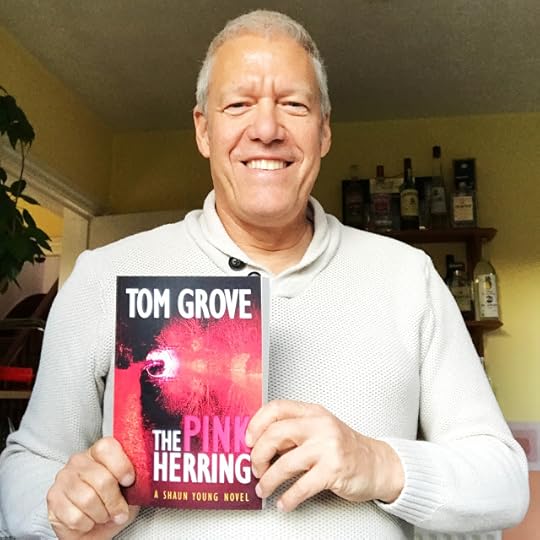 And here it is folks! Wow, to actually hold it my hands - this is a very special day. The quality is surprising good for a print-on-demand product. The pages are well printed and have a nice feel to them - the page turn is easy and pleasant to the touch.
And here it is folks! Wow, to actually hold it my hands - this is a very special day. The quality is surprising good for a print-on-demand product. The pages are well printed and have a nice feel to them - the page turn is easy and pleasant to the touch.The cover art is terrific, front and back, and the book has a weight to it, making feel like the substantial tome that it is.
It may be childish and probably won't last, but I can't stop putting it in my bookcase along side my literary heroes.
Heaven...
Please feel free to share this - go on, hit the button of your choice...
Published on March 24, 2017 09:37
March 23, 2017
Facebook Author Page
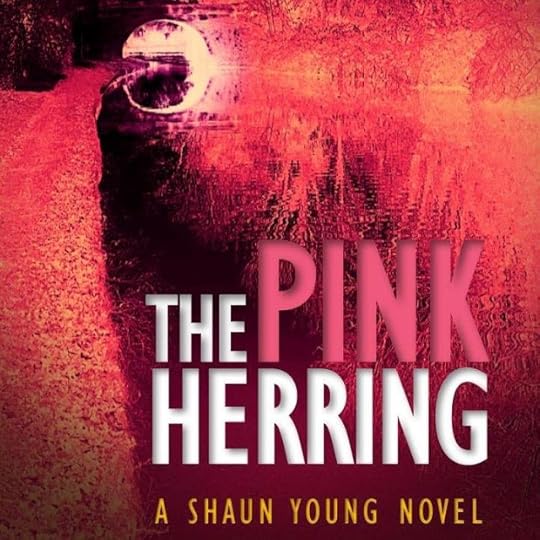 Once more taking advice from the great Tim O'Rourke, today I set up a Facebook Author page from which I can launch news about the book to get the message out.
Once more taking advice from the great Tim O'Rourke, today I set up a Facebook Author page from which I can launch news about the book to get the message out.Not sure where best to focus on - Facebook, Twitter or even this blog? For now I will try Facebook and see how things progress. Apparently, there's a marketing section where you can 'boost' posts to a much wider audience than your followers...
Please feel free to share this - go on, hit the button of your choice...
Published on March 23, 2017 15:56



